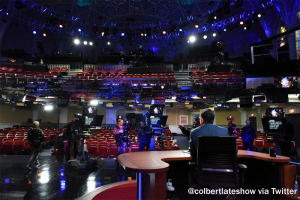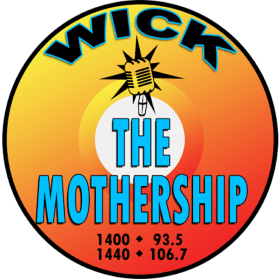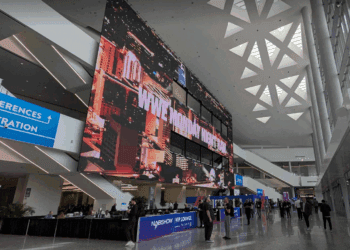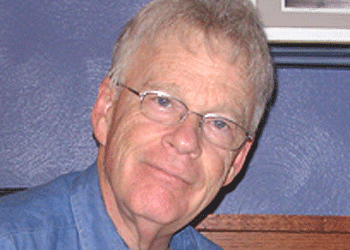In this week’s issue… Coronavirus closes studios, disrupts broadcasters – New format in Scranton – Studio move in Pittsburgh – Morning show crosses border
By SCOTT FYBUSH
*It’s been a week unlike any other in the many years we’ve been writing this column. There’s no good way to start, except to jump into as many facets of the coronavirus crisis and its effect on radio and TV as we can cover. (And then there’s other news, too – we’ll get there after the jump.)
Confirmed cases at CBS New York. The CBS Broadcast Center on W. 57th Street in Manhattan houses a lot of different pieces of CBS TV and radio operations: it’s home to the national TV and radio newsrooms; the studios for “CBS This Morning,” “Sunday Morning,” “60 Minutes,” the CBSN streaming service, WCBS-TV’s local newscasts and CBS Radio News national hourly newscasts; the master control operations for the CBS TV network; production facilities for syndicated shows including “Last Week Tonight” and “Full Frontal with Samantha Bee” and much more.
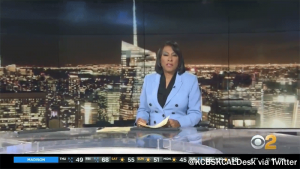 And so the news on Wednesday that two confirmed cases of COVID-19 had been identified in workers whose offices were at opposite ends of the facility forced a lot of scrambling: most national TV newscasts moved in a hurry to the newly-rebuilt CBS bureau in Washington, as did the national radio news operation, which didn’t miss an hourly newscast as it relocated editors, writers and anchors on short notice. (Upstate New York’s own Peter King helped, too, anchoring morning newscasts from his home studio in Florida, as he does frequently for vacation relief.)
And so the news on Wednesday that two confirmed cases of COVID-19 had been identified in workers whose offices were at opposite ends of the facility forced a lot of scrambling: most national TV newscasts moved in a hurry to the newly-rebuilt CBS bureau in Washington, as did the national radio news operation, which didn’t miss an hourly newscast as it relocated editors, writers and anchors on short notice. (Upstate New York’s own Peter King helped, too, anchoring morning newscasts from his home studio in Florida, as he does frequently for vacation relief.)
WCBS-TV pulled off an even more impressive last-minute move: on Thursday and Friday, its evening newscasts were anchored from sister station KCBS-TV in Los Angeles, using LA anchors DeMarco Morgan at 5 and 6 and Pat Harvey at 11 eastern. WCBS-TV’s morning newscasts originated from San Francisco sister station KPIX, in the middle of the night Pacific time, and meteorologist Lonnie Quinn went remote, doing his forecasts from the weather live truck parked in Connecticut. (CBSN, meanwhile, shifted its national production to two other CBS sister stations, WBZ-TV in Boston and KCNC in Denver.)
By Friday, the evacuation and deep cleaning at the Broadcast Center was over, allowing local news, “CBS This Morning” and other functions to return to 57th Street, but disruptions continued through Sunday, when “Sunday Morning” aired a repeat, explaining it had been unable to produce a new show while exiled from its offices.
This is unlikely to be the last such disruption, and in the days and weeks to come we’ll be exploring how stations can be ready for these incidents, both here and on our Top of the Tower Podcast.
Off-limits to the public. As the nation moves closer to a total shutdown, most broadcast groups of any significant size are closing their doors to the public, and often to non-essential personnel as well. Beasley implemented an “essential personnel only” policy late last week, and we’re hearing similar policies are in place or soon will be. At some stations and groups, planning is already well underway to allow even airstaff to work from home as much as possible.
Prize pickup? That’s fast going to mail-only – but of course the tickets that are the mainstay of radio prizes are drying up quickly as events get cancelled for weeks to come.
In-studio guests? That’s becoming a thing of the past, too; just to give one example, the morning show on WHAM-TV/WUHF here in Rochester, which sometimes moves as many as a dozen guests in and out of the studio over four hours, has turned mostly to Skype for its interviews; elsewhere, we’re hearing some stations are interviewing guests from a green-room camera and not allowing them into the main studio.
(Is your station ready? We’d like to hear about it – and again, we’ll be featuring stories and advice starting in the next few days on special editions of the podcast.)
Sports? PPD. For a few days last week, sports radio stations had plenty to talk about, as league after league began shutting down operations, cancelling or suspending seasons and suddenly winding down huge events like March Madness and baseball’s spring training.
But now what? At sports stations in big markets like New York, Boston and Philadelphia, talk hosts already spend plenty of time talking about more general topics – New York’s WFAN, for instance, became a community sounding board in the days after 9/11, and at least for a while, it’s poised to do so again, just like Boston’s WEEI and WBZ-FM and Philly’s WIP. With entire cities cooped up at home wanting to talk, it’s a good bet that these “sports” stations will end up with higher ratings and long-term audience loyalty than the traditional “talk” stations that ought to own the conversation – especially when there’s more local content on the big “sports” stations than on talkers still dependent on syndicated content.
For smaller stations, though, and especially the AMs that do little but relay ESPN or Fox Sports, the “what do we talk about” question is going to begin surfacing pretty quickly, and we’ll be watching closely this week to see how it all plays out. (At particular peril, we’d think, are the handful of stations like WDAS in Philadelphia that have staked out a niche as information sources for sports betting, which is of course on hiatus for the duration.)
 Live in front of no studio audience. Among the many disruptions to “business as usual” is the traditional studio audience for TV talk shows; by Thursday, all the shows produced in New York and Los Angeles were operating in front of empty or nearly-empty seats; Stephen Colbert, for instance, did a somewhat awkward hour in front of a dozen of his writers and producers in a cavernous Ed Sullivan Theater, then announced he’s taking the “Late Show” on hiatus, at least for next week.
Live in front of no studio audience. Among the many disruptions to “business as usual” is the traditional studio audience for TV talk shows; by Thursday, all the shows produced in New York and Los Angeles were operating in front of empty or nearly-empty seats; Stephen Colbert, for instance, did a somewhat awkward hour in front of a dozen of his writers and producers in a cavernous Ed Sullivan Theater, then announced he’s taking the “Late Show” on hiatus, at least for next week.
College radio’s early end. With most college campuses sending students home early, and some cancelling the rest of their spring semesters, many college radio stations are turning to automation or even going silent. Even at stations that incorporate considerable community involvement, campus closures are keeping local programmers out of the studios of their local stations. It’s a very incomplete list, but we know that programmers are locked out of stations such as WNHU (University of New Haven) in Connecticut, WMBR (MIT) in Cambridge, WOZQ (Smith College) in Northampton, Mass. and WMFO (Tufts) in Medford, Mass., in some cases at least through the end of April.
With no automation in place, WMBR shut down completely at 2 PM Sunday, telling listeners “We are prioritizing the health and safety of our members. We are continuing to work with MIT as a part of their response to COVID-19.”
The FCC has announced it won’t penalize college and high school stations for these closures, considering them to be “school break” periods during which no minimum broadcast schedule is required. (We’ll add to our list of closures and automation-only operations in the days to come.)
Repack? Gulp. Friday marked another milestone in the FCC’s ongoing DTV repack process, as most stations in Phase 8 finished up their channel changes, largely on schedule. In our region, that included several channel moves in Syracuse, Utica and Buffalo. But with Phase 9 now getting underway, due to include a big swath of high-band VHF channel moves that include stations in New York, Philadelphia and Scranton, there’s a new hitch: we’re hearing that the tower crews that are vital to the tightly-scheduled repack operation are pulling out of the field to avoid the risk of exposure from travel and hotel living right now. Will the FCC (itself operating largely from home offices now) grant an extension to that next phase? And what happens to stations that have made their channel changes but aren’t yet at full power from their new facilities?
(There’s the question, too, of equipment availability in the months to come – with so much gear now sourced from factories in Asia, how well will that supply chain hold up, especially if there’s an increased demand for codecs, small mixers and other gear to allow for more home studio operations.)
Meanwhile, on the sales front. Here, perhaps, is the biggest unknown right now for radio and TV: as so many of the usual categories of advertisers go dark for the duration, who’ll be left to buy ad time over the next few months? Without concerts to promote, movies to open, festivals on the weekend, or even open bars or restaurants, we’re hearing anecdotal stories of lots of ad buys being canceled.
But we’re also hearing positive stories of stations using their ad time as a force for community connection, reaching out to get advertisers on the air to promote home delivery services, available items at local markets and all the other necessities of this strange new world in which we’re suddenly living.
We’ll be talking more about that in the days to come here and on the Top of the Tower Podcast – as well as some more mundane but critical topics, like the nuts and bolts of moving your hosts to home studios, keeping automation functioning remotely and keeping studios sanitary. (Do not spray anything directly into your studio mics!)
And we’re here to help, or even just to talk: if Fybush Media can assist you with FCC filings, emergency preparedness or anything else, our email and phones are open – and it’s not like we’re going anywhere!
(Well, except for one thing: your editor will be in studio this morning at 11 ET as a guest on the nationally-syndicated “1A” from NPR and WAMU Washington, as part of a panel that also includes Dr. Demento himself, talking about the role of the radio DJ in today’s digital world. Check your local NPR listings!)
One more source of help: our content partners at RadioInsight have a growing list of talent available to cover airshifts from home studios, and we encourage you to check it out if your station is in need of some on-air assistance.
SPRING IS HERE…

And if you don’t have your Tower Site Calendar, now’s the time!
If you’ve been waiting for the price to come down, it’s now 30 percent off!
This year’s cover is a beauty — the 100,000-watt transmitter of the Voice Of America in Marathon, right in the heart of the Florida Keys. Both the towers and the landscape are gorgeous.
And did you see? Tower Site of the Week is back, featuring this VOA site as it faces an uncertain future.
Other months feature some of our favorite images from years past, including some Canadian stations and several stations celebrating their centennials (buy the calendar to find out which ones!).
We still have a few of our own calendars left – as well as a handful of Radio Historian Calendars – and we are still shipping regularly.
The proceeds from the calendar help sustain the reporting that we do on the broadcast industry here at Fybush Media, so your purchases matter a lot to us here – and if that matters to you, now’s the time to show that support with an order of the Tower Site Calendar. (And we have the Broadcast Historian’s Calendar for 2025, too. Why not order both?)
Visit the Fybush Media Store and place your order now for the new calendar, get a great discount on previous calendars, and check out our selection of books and videos, too!
[private]
*As for the rest of the week’s news, it starts on the PENNSYLVANIA/NEW JERSEY line, where Fred Weinberg’s Far West Radio LLC filed a $1 million deal to buy translator W264BH (100.7) from Spectrum Development Group. Weinberg is the CEO of the USA Radio Network, and it’s not clear yet what his plans are for the 100.7 translator or a 99.1 translator in Chicago he also filed to purchase last week for almost twice as much.
W264BH is licensed to Mount Holly, N.J., but after Spectrum bought it from its original owner, Rowan College at Burlington County, it’s migrated west from Delran, N.J. to the present 99-watt directional facility atop One Liberty in Center City Philadelphia. It’s currently licensed to relay K-Love’s WKVP (106.9), but would presumably change to a commercial HD subchannel once Weinberg takes over.
 *Up the road in Scranton, Bold Gold Media won’t need to wonder what becomes of the syndicated sports format now: on March 8, it dropped “The Game” from WICK (1400 Scranton)/WCDL (1440 Carbondale) and their translators on 93.5 in Clarks Summit and 106.7 in Honesdale.
*Up the road in Scranton, Bold Gold Media won’t need to wonder what becomes of the syndicated sports format now: on March 8, it dropped “The Game” from WICK (1400 Scranton)/WCDL (1440 Carbondale) and their translators on 93.5 in Clarks Summit and 106.7 in Honesdale.
Instead of Fox Sports Radio, the stations are now “The Mothership,” playing oldies from the 1950s through 1970s.
*In Pittsburgh, Steel City Media has moved its studios. PBRTV.com reports WLTJ (92.9) and WRRK (96.9) relocated over the winter to the fourth floor of 5000 McKnight Road, north of the city in Ross Township; the stations had been located downtown in the Centre City Tower complex on Smithfield Street.
And there’s another station sale in the Keystone State: in Meyersdale, Roger Wahl transfers WQZS (93.3) to his daughter, Wendy Sipple, for $10. (Wahl has been in legal trouble, charged with soliciting a man to rape a female friend of his.)
*In western NEW YORK, WJJL (1440 Niagara Falls) is changing hands: M.J. Phillips Communications, which had been operating the station as a debtor in possession in recent years, has filed to sell the station to Kenmore Broadcasting Communications. Kenmore, owned by taxi company owner William Yuhnke, is paying $60,000 for the station, with a time brokerage agreement before closing.
*Baseball on the Radio? We’ll hold off on our usual rundown now until and unless we have some idea of when and whether there will be a season – but before spring training screeched to a halt last week, the lame-duck Pawtucket Red Sox had some news out of RHODE ISLAND. Mike Antonellis moves up from the Portland Sea Dogs in Maine to join Josh Maurer and Jim Cain in the booth, filling the hole left behind by Mike Monaco’s move to the ACC Network (and, until last week, calling some spring training Red Sox games for NESN.)
But there’s still more news from the team – in addition to being heard on WHJJ (920 Providence) this season, if there is a season, the PawSox will also be heard in their future hometown of Worcester, MASSACHUSETTS, where Cumulus has secured rights to the Worcester Red Sox-to-be. WORC-FM (98.9 Nash Icon) will carry the games this year, and when the WooSox debut in 2021, WORC-FM will get weekday games and weekend games will be on WWFX (The Pike 100.1).
Closer to Boston, EMF’s “K-Love” network has added another new outlet: listeners can hear it on iHeart’s WZLX (100.7-HD3), in a deal that was apparently negotiated before EMF bought the former WAAF (107.3, now WKVB) from Entercom. The WZLX-HD3 simulcast is identifying jointly with WUBG (1570 Methuen) and its 105.3 translator, which had been carrying K-Love in a lease arrangement for the last few months.
*In MAINE, there’s another call change at the “Hot” simulcast: WJYE (1280 Gardiner) is now WHTP, while flagship WHTP (104.7 Kennebunkport) adds the “-FM” suffix to its calls.
*And CANADA‘s biggest market now has a US-based syndicated morning show: as of this morning, the New York-based “Breakfast Club” is being heard on Stingray’s “Flow 93.5” (CFXJ). Orbyt Media is handling syndication of the Premiere Networks show into Canada.
[/private]


